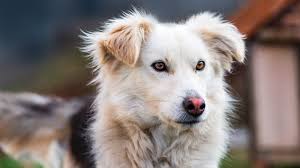Africa is known for its rich biodiversity, and the African Wild Dog, chien africain scientifically called Lycaon pictus, is one of the continent’s most fascinating and unique predators. Often referred to as the “painted wolf” due to its striking, multi-colored coat, the African Wild Dog stands out not only for its beauty but also for its social complexity and critical role in Africa’s ecosystems.
1. Appearance and Physical Characteristics
African Wild Dogs are medium-sized canines, characterized by long legs, large rounded ears, and a lean but muscular build. Their coats are a beautiful blend of black, yellow, white, and brown patches, with no two dogs bearing identical patterns. This unique fur pattern acts as camouflage, helping them blend into their surroundings when hunting or avoiding larger predators. The dogs have four toes on each paw, unlike domestic dogs, who typically have five. This adaptation allows them to run at speeds up to 44 miles per hour, making them highly effective in pursuing prey over long distances.
2. Habitat and Range
African Wild Dogs once roamed much of sub-Saharan Africa, from forests to open savannas. Today, their range is limited to a few protected areas in countries like Tanzania, Botswana, Zimbabwe, and South Africa. Habitat loss, human encroachment, and competition with larger predators have significantly reduced their population, and they are now listed as endangered by the International Union for Conservation of Nature (IUCN).
3. Social Structure and Pack Dynamics
One of the African Wild Dog’s most remarkable aspects is its strong social structure. They live in packs that are usually led by an alpha pair, a male and a female, who are the primary breeders. Packs typically contain around 10 individuals but can sometimes grow to over 20 members. Unlike many other pack animals, African Wild Dogs are known for their cooperative breeding, where all members of the pack help to care for and protect the pups born to the alpha female. This strong pack mentality enhances their survival and hunting efficiency, allowing them to tackle larger prey.
4. Hunting and Diet
The African Wild Dog is a carnivorous predator with a diverse diet. Known for its relentless hunting style, the pack works together to isolate and chase down prey like impalas, antelopes, warthogs, and smaller animals. A typical hunt involves an organized and prolonged chase, in which the dogs pursue their prey until it becomes exhausted. With a hunting success rate of nearly 80%, African Wild Dogs are among the most efficient hunters in the animal kingdom, far surpassing lions and hyenas.
5. Communication and Social Behaviors
Communication among African Wild Dogs is both complex and fascinating. They use a series of vocalizations, including high-pitched chattering, whining, and twittering sounds, to coordinate during hunts or signal danger. Body language, such as tail wagging, play-bows, and grooming, also plays a significant role in maintaining pack harmony. Their elaborate social behaviors and vocal communication methods indicate a highly intelligent and cooperative nature, which has contributed to their reputation as some of the most socially advanced animals in the wild.
6. Conservation Challenges and Efforts
The African Wild Dog faces numerous threats, primarily due to habitat fragmentation, human-wildlife conflict, and diseases like rabies and canine distemper, often spread by domestic dogs. With an estimated population of fewer than 6,000 individuals, they are one of the world’s most endangered carnivores. Conservationists and local governments have made significant efforts to protect these animals, establishing protected areas, implementing vaccination programs for local dog populations, and creating corridors to connect fragmented habitats.
7. African Wild Dogs in Culture and Symbolism
In many African cultures, animals carry symbolic significance, and the African Wild Dog is no exception. Known for its teamwork, resilience, and social structure, the African Wild Dog is often viewed as a symbol of cooperation and perseverance. Its ability to thrive through mutual aid and its fierce loyalty to its pack members have made it a symbol of unity and strength in African folklore.
Conclusion
The African Wild Dog is not only a marvel of evolutionary adaptation but also a testament to the power of teamwork and cooperation. With their beautiful coats, remarkable hunting abilities, and tight-knit social bonds, these dogs embody many of the qualities that make African wildlife so unique and irreplaceable. Efforts to save these animals from extinction are crucial, not only for maintaining ecological balance but also for preserving a symbol of Africa’s wild and untamed beauty.

